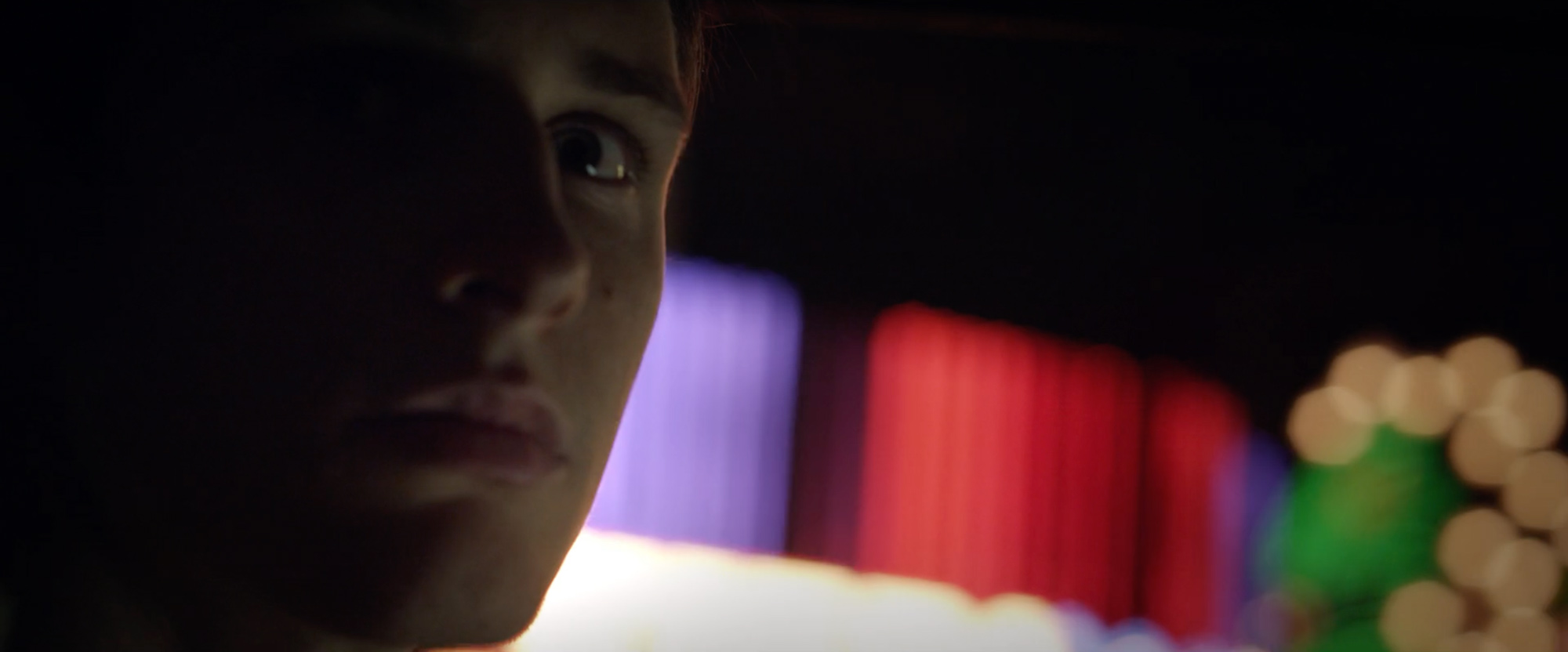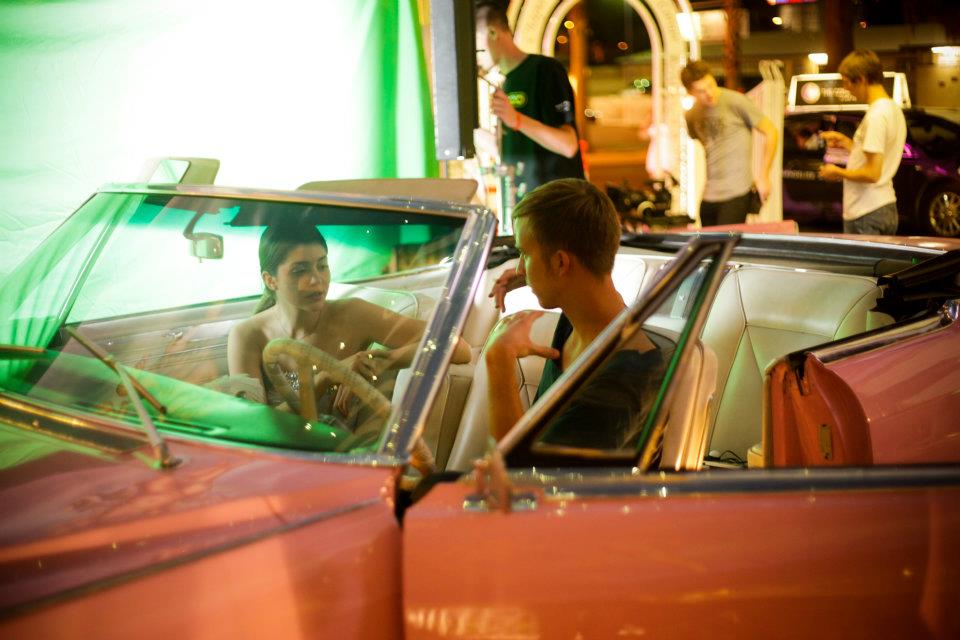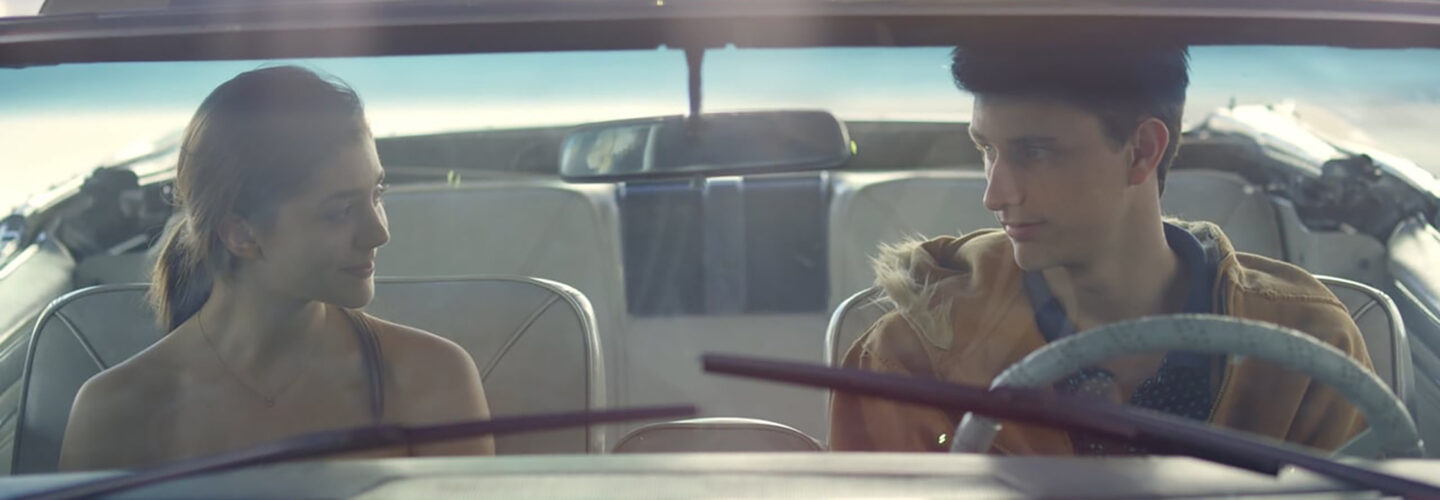
A mood poem of love and anxiety, Zack Campbell’s abstract short Animal Fiction sees a real life couple play their fictional doppelgängers as they probe the depth and nature of the love on the eve of their Las Vegas wedding. DN speaks to Zachary about how a night of free form shooting and some judicious editing led to this contemplative short.
How did the idea for such an intimate, confessional story develop?
The genesis of this short was kind of a happy accident, actually. Initially, I had planned a very different short about a wedding chapel in Vegas but once I met and eventually cast Drew and Tori Scholl, the two leads, I sort of tossed out the script and tried to shape the story a little more around them. The same was true for our primary location, A Little White Wedding Chapel, which proved to be full of so many beautifully enigmatic people, such as Joe Sharp, who plays the caretaker. In that way, the story just started to come together the more we interacted with the city, and my DP, Jeremy Hubin, and I just rolled with it. It was very free form – we would shoot these long conversations between the two leads, often for a couple hours at a time, and then just follow them around the city and watch them interact with it. We basically just shot anything and everything that we could. It was great. Altogether it was a pretty stripped down production. We shot most of the film with a skeleton crew, utilizing the RED Epic and very minimal lighting set-ups.



Much of Animal Fiction is bathed in this warm neon light which suffuses the film with a null-time, dreamlike quality. What set ups were you and Jeremy looking for as you explored Vegas?
Vegas is interesting because it somehow manages to be both dour and dreamy at once, and those seem to be somewhat difficult things to reconcile with each other. The city itself is kind of symbolic in some ways too, so we looked for locations marred with that sort of pastiche, kitschy quality, and tried to mimic that through the lighting as practically as we could. Very little adjustments were actually made in post during the final color grade.


The ease and flow which Drew and Tori have between them totally pulled me into their relationship. What work did the three of you do beforehand and on set to achieve those natural performances?
I really wanted to cast a real couple as the two leads and kind of observe them from a somewhat uncomfortable closeness. I think we ended up spending about three or four evenings total running through the beats of the script (more of an outline), but for the most part we just talked and got to know each other as people. On set, the process was very free-form; there wasn’t any dialogue written, so we just had certain emotional beats that needed to be hit, but as much time as was needed to get to there. I really just tried to take a back seat and interfere as little as possible, only doing so in order to steer the conversation when needed. It never went as planned either, which was great! It always felt like what we were doing was fresh and spontaneous, which is a really rewarding feeling after spending so much time in the planning stages. But by the time we finished shooting, the story had sort of taken a left turn and felt like something completely different than what we initially set out to make, which is due in large part to the chemistry between Drew and Tori.
At the end of the shoot, I had like three hard drives full of just hours and hours of footage.
How did you go about cutting down the mountains of material you shot into the final film?
The most difficult part of making this short was dealing with the sheer volume of footage we ended up with. It was pretty daunting, really. At the end of the shoot, I had like three hard drives full of just hours and hours of footage, which I proceeded to sit on for some time, not really knowing what to do with it. The final story, however, really came from the edit which just involved months of sorting through the hours of footage and slowly molding a story out of it. It was kind of like a final re-write. Initially, the story was planned as more of a straight forward narrative, but I couldn’t justify cutting so many of my favorite moments in order to achieve that, so I opted for more of a stream of consciousness structure. At the same time, not having that narrative constriction also allows for more freedom with time, and creating the illusion of an elapsed period.
What’s next?
I’m currently finishing up another short, as well as a music video for the band Wam Dingis.


